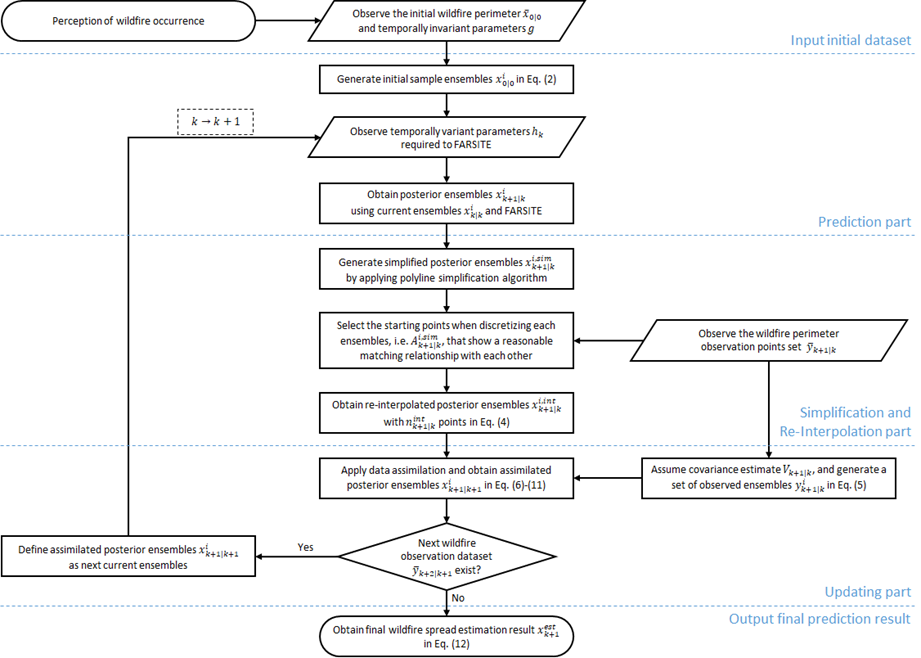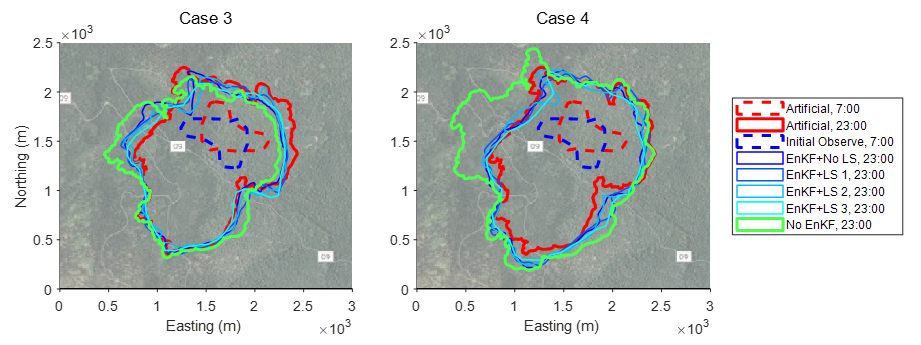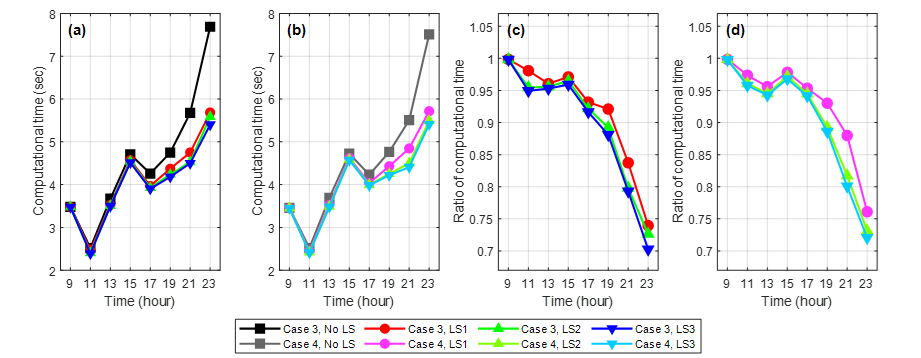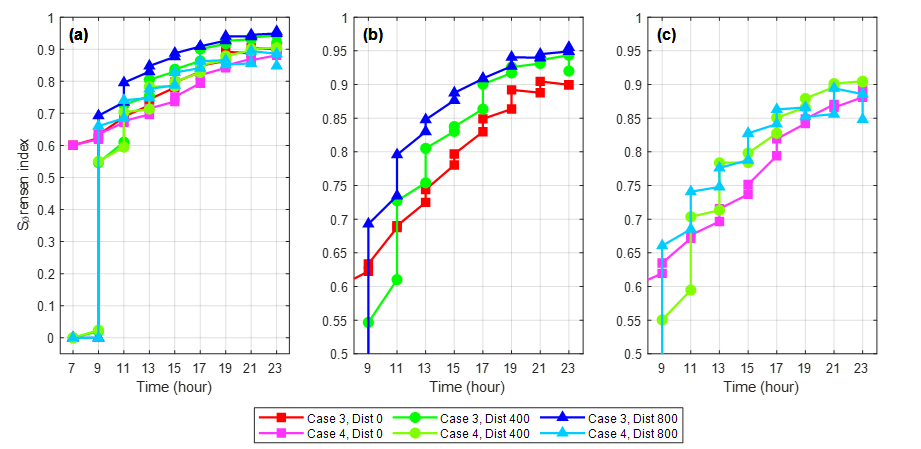A journal paper, titled “Rapid prediction of wildfire spread using ensemble Kalman filter and polyline simplification” was recently published in Environmental Modelling & Software. The paper was co-authored by Mr. Seungmin Yoo (Ph.D. student, SSRG) and Prof. Junho Song.
The permanent link via DOI number of the paper is https://doi.org/10.1016/j.envsoft.2022.105610. The full reference information is as follows.
Yoo, S., and J. Song* (2023). Rapid prediction of wildfire spread using ensemble Kalman filter and polyline simplification. Environmental Modelling & Software. Vol. 160, 105610.
In this paper, a new algorithm was proposed to reduce the computational time required for wildfire spread prediction based on the FARSITE wildfire simulator and real-time observation data. To facilitate a rapid prediction, two-dimensional polyline simplification that can preserve the topological relationship was applied to FARSITE simulation results of each ensemble. The application of polyline simplification adaptively reduces the number of points to represent wildfire perimeters, which speeds up data assimilation by the ensemble Kalman filter (EnKF). Furthermore, a new method to determine the matching between prediction ensembles and the observation data was proposed to facilitate data assimilation. The newly proposed EnKF algorithm features an additional part between the Prediction and Updating parts to incorporate these methods. This algorithm can be used in most regional-scale wildfire simulators such as PROMETHEUS, which represent perimeters in a similar way to FARSITE. The proposed algorithm successfully reduced computation time required for data assimilation while maintaining accuracy of near-real-time wildfire spread prediction despite errors in initial wildfire observation and the rate of spread (ROS) adjustment factor. The proposed method showed robust performance under the wildfire observation data including various errors, which will be helpful in building effective response strategies such as wildfire suppression and evacuation.
ABSTRACT: This paper proposes a new method for rapid prediction of wildfire spread, which employs computational wildfire simulations by FARSITE and assimilates the simulation results with actual observation data by means of an ensemble Kalman filter. To expedite data assimilation, the wildfire perimeter is represented by a two-dimensional polyline simplification algorithm. In addition, to facilitate the data assimilation, a new process is developed to relate the prediction results with the actual observation data. The proposed method is tested and demonstrated by an example wildfire spread scenario generated based on actual climate, topography, and vegetation. The results confirm that the polyline simplification algorithm can drastically reduce the computational time required for data assimilation while maintaining the accuracy of predictions. The proposed method is expected to serve as a core algorithm for near-real-time prediction and data-driven updating of wildfire spread.






